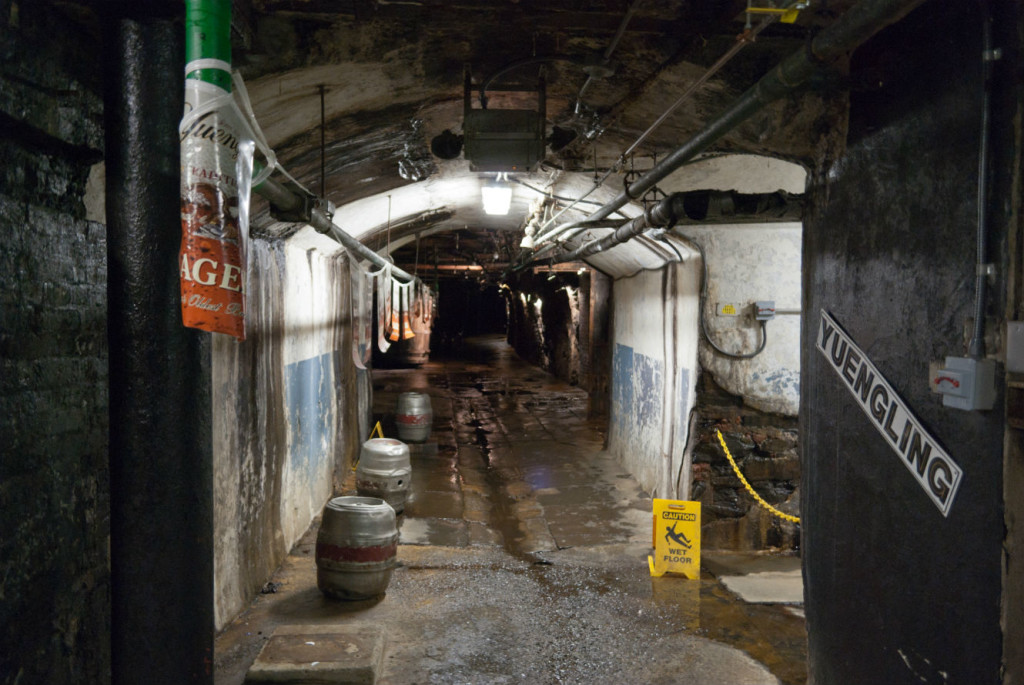How Lagering Creates Crystal Clear (And Delicious) Beer

This past week, War On The Rock’s Russian Imperial Stout (AKA Hanslav’s Stevedore Stout, thanks Will) finished its months-long cold aging in its primary vessel. The beer then took a short trip across my dining room to a keg where it began the process of carbonation. Thankfully, due to modern technology I was able to use a couple of tubes, some gas, and a refrigerator to achieve this feat. However, the technique used, e.g. cold storing beer for later consumption, is an age-old process that defines the beer variety we know as lager.
The word lager comes from the German for “storehouse” and the word lagerbier means “beer brewed for keeping.” As famed beer historian Michael Jackson explains, lager yeast differs from ale yeast by sinking to the bottom of the fermentation vessel and becoming what Jackson calls “bottom fermenting [yeast] cultures.” The way lager yeast settles (or flocculates in beer jargon), in addition to colder fermentation temperatures and longer maturation periods, means lagers stay clear and clean as they make their way to your glass.
Of course, this raises some questions – namely, how do you keep the beer cold during those long months of maturation, especially during the summer? Jackson explains further that brewers of old sought out caves that maintained the perfect temperature for lagers to age. During the hot summer months those caves, and the ice that was packed inside, kept the beer at the right temperature, thus allowing lagers to find their perfect home.
However, caves can only hold so much beer, and in a world craving lager there needed to be another solution. Enter Spaten and Carl Von Linde. As Brooklyn Brewery brewmaster Garrett Oliver writes in the seminal brewing text The Oxford Companion To Beer, the brewmasters at Spaten pushed Linde to install a new device, the refrigerator, in their brewery to make lagering a year-round activity. With the help of refrigeration, Spaten produced what would become one of the world’s most famous beers, the Helles.
Even though we use refrigeration now, seeing a good old-fashioned lager cave is still pretty cool. Thankfully, one of the best is right here in America at its oldest brewery, Yuengling. A trip to the brewery in Pottsville, PA shows you one of the coolest storage caves for a beer (and history) geek. As the story goes, Yuengling’s founder, David Yuengling, had the foresight to realize that thirsty miners in the surrounding region would love his lager beer. In order to recreate the caves from his home country of Germany, Yuengling built the brewery into a nearby mountain, thereby allowing for perfectly maintained lagering temperatures year round.
However, the story doesn’t end there. During prohibition, authorities actually sealed the caves with bricks, thus trapping delicious lager inside. As soon as prohibition ended, workers went down to the caves with sledgehammers to break down the walls and extricate the beer (you can still see where they took the sledgehammers to the wall on Yuengling’s brewery tour). To celebrate the end of Prohibition, Yuengling sent a truckload of their “winner beer” to the White House to show their appreciation to President Franklin Delano Roosevelt who finally put an end to the “noble experiment.”
Even though lagers are the main type of beer that require lagering (obviously), as I mentioned earlier, I lagered WoTR’s beer, which is an ale. There is a method to my madness though, as the homebrew magazine Brew Your Own (BYO) highlighted in December 2002. Big beers such as Barleywine or Russian Imperial Stout benefit from a little extra aging, namely to round off the harsh edges of the beer, thereby creating a smooth, mellow brew that combines all of our desired flavors.
So the next time you’re drinking a traditional lager, or a big beer that required a little more time for perfection, remember to thank the Germans. Were it not for them, our beer would still be stuck in the Stone Age.
Salvatore Colleluori is a political writer by day and a homebrewer and beer enthusiast by night. He holds a degree in Political Science from the George Washington University and enjoys reading about alcohol, history, and foreign relations. He is also an avid music lover, specifically jazz and the Grateful Dead.
Image: Matt Chan, CC

